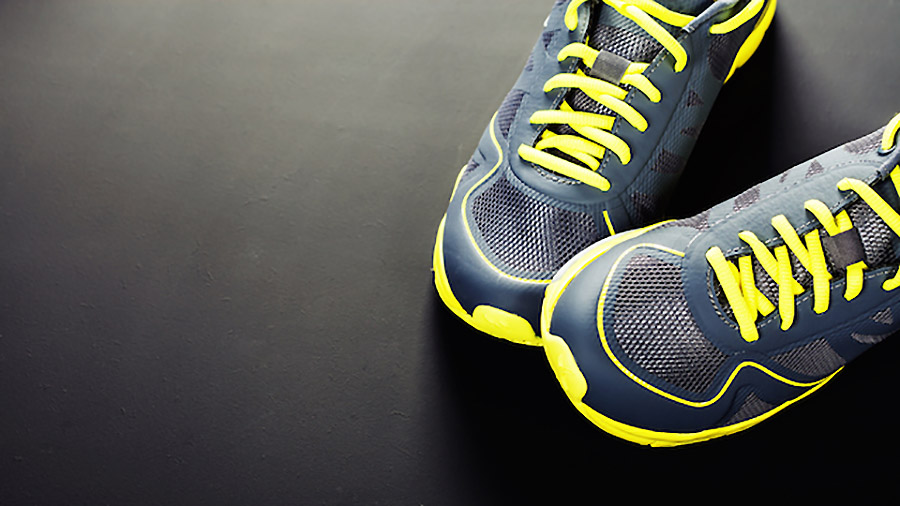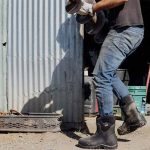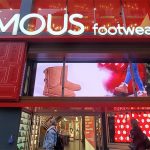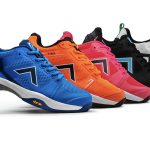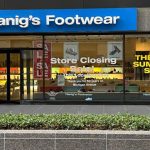Yue Yuen Industrial (Holdings) Limited reported revenue of US$8,444.9 million in 2020, representing a decrease of 16.4 percent compared with the previous year. The fall in revenue was mostly attributed to the impact of the COVID-19 pandemic.
The loss attributable to the owners of the company was US$90.8 million, compared to a profit attributable to the owners of the company of US$300.5 million for the previous year. The basic loss per share for the year was 5.64 US cents compared with the basic earnings per share at 18.64 US cents for the previous year.
The Board has resolved not to declare a final dividend for the year ended December 31, 2020 (2019: HK$0.70 per share). The Group is inclined to preserve more cash momentarily until the global economy has recovered further and the company’s profitability has stabilized. It remains committed to upholding a relatively steady dividend level over the long-term.
Total Revenue By Product Category
In the year ended December 31, 2020, the revenue attributable to footwear manufacturing activity, including athletic shoes, casual/outdoor shoes and sports sandals, decreased by 21.3 percent to US$4,372.9 million, compared with the previous year, whereas the volume of shoes shipped decreased by 24.2 percent to 244.4 million pairs. The decrease was mostly due to delayed shipments and adjusted and canceled order books from customers in response to lower consumer demand resulting from COVID-19, despite recording a sequential improvement in the fourth quarter compared with previous quarters of the year. The average selling price increased by 3.8 percent to US$17.89 per pair, as compared with the previous year, which was primarily due to the resilient demand for high-end categories in the Group’s product portfolio.
The Group’s total revenue with respect to the manufacturing business, including footwear, soles, components, and others, was US$4,735.7 million in 2020, representing a decrease of 21.1 percent, as compared to the previous year.
In the year ended December 31, 2020, the revenue attributable to Pou Sheng, the Group’s retail subsidiary, decreased by 5.7 percent to US$3,709.2 million, compared to US$3,933.0 million in the previous year. In RMB terms, Pou Sheng’s reporting currency, revenue decreased by 5.8 percent to RMB25,611.1 million, compared to RMB27,189.8 million in the previous year. Its revenue in the first quarter of 2020 was heavily impacted by various control measures implemented by the Chinese government to contain the spread of COVID-19, which resulted in the temporary closure of Pou Sheng’s brick& mortar (B&M) stores between Lunar New Year and mid-March 2020. However, this was largely mitigated by the rapid growth of its omnichannel business and a progressive recovery in sales starting from the second quarter of 2020, supported by stabilizing consumer sentiment.
As of December 31, 2020, Pou Sheng had 5,240 directly operated retail outlets and 3,835 stores operated by sub-distributors across the Greater China region, representing a net closure of 758 stores as compared with the same period of 2019.
Among categories, Athletic Shoe sales were down 17.4 percent to US$3,752.3 million. Casual/Outdoor Shoes and Sports Sandals sales reached US$620.6 million, declining 38.9 percent. Soles, Components and Others sales were US$362.8 million, down 18.0 percent. Retail Sales amounted to US$3,709.2 million, off 5.7 percent.
Gross Profit
In the year ended December 31, 2020, the Group’s gross profit decreased by 27.1 percent to US$1,831.0 million. The gross profit margin of the Group’s manufacturing business contracted by 3.8 percentage points to 14.7 percent, as compared to the previous year. The decrease in the gross profit margin for the manufacturing business was primarily due to operating deleveraging as a result of reduced capacity utilization and the decrease in revenue.
Given the uncertainties and low visibility on customer demand, the Group optimized its production capacity and imposed strict cost control measures during the year under review, paving the way to restore optimal operational efficiency. As a result, the gross profit margin for the manufacturing business saw a decent improvement in the second half of 2020, especially in the fourth quarter.
Pou Sheng’s gross profit margin declined to 30.6 percent in the year ended December 31, 2020, compared to 34.1 percent in the previous year, which was mainly attributed to increased promotional activities, especially in the first half of the year to motivate and revive sales amid the COVID-19 disruptions.
Selling & Distribution Expenses And Administrative Expenses
The Group’s total selling and distribution expenses for 2020 declined to US$1,079.2 million (2019: US$1,222.1 million), equivalent to approximately 12.8 percent (2019: 12.1 percent) of revenue.
Administrative expenses for 2020 amounted to US$546.7 million (2019: US$682.7 million), equivalent to approximately 6.5 percent (2019: 6.8 percent) of revenue.
Net other expenses for 2020 surged to US$215.9 million (2019: US$137.6 million), equivalent to approximately 2.6 percent (2019: 1.4 percent) of revenue. The increase was mostly attributable to one-off charges of approximately US$107 million arising from factory adjustments on the manufacturing side.
The management will continue to look at ways to improve its efficiency and productivity to counter the volatility and uncertainty faced by the Group’s manufacturing business, as well as the dynamic and uncertain environment faced by its retail business.
Recurring Loss/Profit Attributable To Owners Of The Company
For the year ended December 31, 2020, the Group recorded a non-recurring loss of US$22.4 million, which included a loss of US$30.4 million due to fair value changes on financial instruments at fair value through profit or loss (FVTPL) and an impairment loss of US$14.0 million on the interest in an associate. These losses were partly offset by a one-off gain of US$15.7 million on the partial disposal of an interest in a joint venture. By contrast, for the year ended December 31, 2019, the Group recognized a non-recurring profit of US$18.3 million, which included a net gain of US$18.6 million from the disposal of the TCHC Group, and a net gain of US$8.4 million due to fair value changes on financial instruments at FVTPL. Excluding all items of nonrecurring in nature, the recurring loss for the year ended December 31, 2020 was US$68.4 million, compared to a recurring profit attributable to owners of the company at US$282.3 million for the previous year.
In addition to the analysis above, one-off charges for factory adjustments, together with the cost related to idle capacity with the Group’s manufacturing business, also constituted a significant portion of the loss for the year ended December 31, 2020, with a majority of the expenses associated with the capacity adjustments being recorded in the first nine months of 2020.
Share Of Results Of Associates And Joint Ventures
In 2020, the share of results of associates and joint ventures was a combined profit of US$48.8 million, compared to a combined profit of US$52.0 million recorded in the previous year.
Prospects
The Group expects to see a sequential improvement in its performance in 2021 supported by the recovery of global demand, although volatility may persist as North America and Europe continue to grapple with new strains of COVID-19. With vaccination programs around the world starting to roll out, supported by government stimulus programs, the Group is cautiously optimistic about its recovery momentum while the stability of its order books and improving retail sentiment being the primary drivers.
Efficiency and profit improvement will be the main focus in 2021. The Group will continue to leverage its core strengths, adaptability and competitive edge to overcome short-term disruptions and safeguard its sustainable profitability. It will prioritize value growth, rather than pure volume growth, and will leverage the athleisure trend and seek more premium orders with a better product mix. The Group will also prudently and progressively ramp back up its manufacturing capacity in Southeast Asia, with utilization expected to improve in all regions.
With the operating environment improving, the Group will resume its capital expenditure program, which includes investments in automation, capacity migration and optimization and in the expansion and upgrade of experience-driven retail stores in Greater China. This will allow the Group to further meet customer demands for quality, flexibility and experience. The Group will continue to actively monitor the macroeconomic and geopolitical situation.
It will continue to enhance its product development and innovation capabilities and explore other value-added and margin-accretive opportunities for vertical integration to tap new markets, creating long-term synergies for its businesses in the future. Over the longer-term, it will continue to proactively adapt its production capacity to cater to the fast-moving market environment and ongoing trends, including increased demand from brand customers for greater versatility, flexibility, faster turnaround times and end-to-end capability. This includes enabling more flexible set-ups and frequent line change-overs through process reengineering, increased automation levels and SAP ERP system implementation to optimize its ongoing smart manufacturing strategy and finally, leveraging its Greater China retail operation for better cross-business synergies. This will ensure that the Group can continue to provide differentiated value-added and one-stop services to customers and strategic partners with whom it has maintained long-term relationships. The Group remains optimistic about the long-term growth prospects of its retail business, given increasing health awareness among consumers post-COVID-19, rising sports participation rates and the growth of the athleisure trend in the Greater China region. With the further optimization of its retail networks, Pou Sheng’s omnichannel strategy will continue to be supported by its increasingly diverse B2C channels and the integration of sports services content that enrich the consumer experience. It will also continue to benefit from the Chinese government’s supportive policies for growing the sports goods market and the more mature online shopping habits of Chinese consumers.
Lu Chin Chu, chairman, commented, “2021 looks set to be a year of revitalization and rejuvenation as we continue to strengthen our competitiveness and position ourselves as an indispensable strategic supplier and partner to global brands. We will ensure our enviable market position by continuing to place innovation, design and development capabilities, flexibility, quality, and sustainability at the center of our business, while further deepening our relationships with the world’s major sporting brands.”
Photo courtesy Yue Yuen

